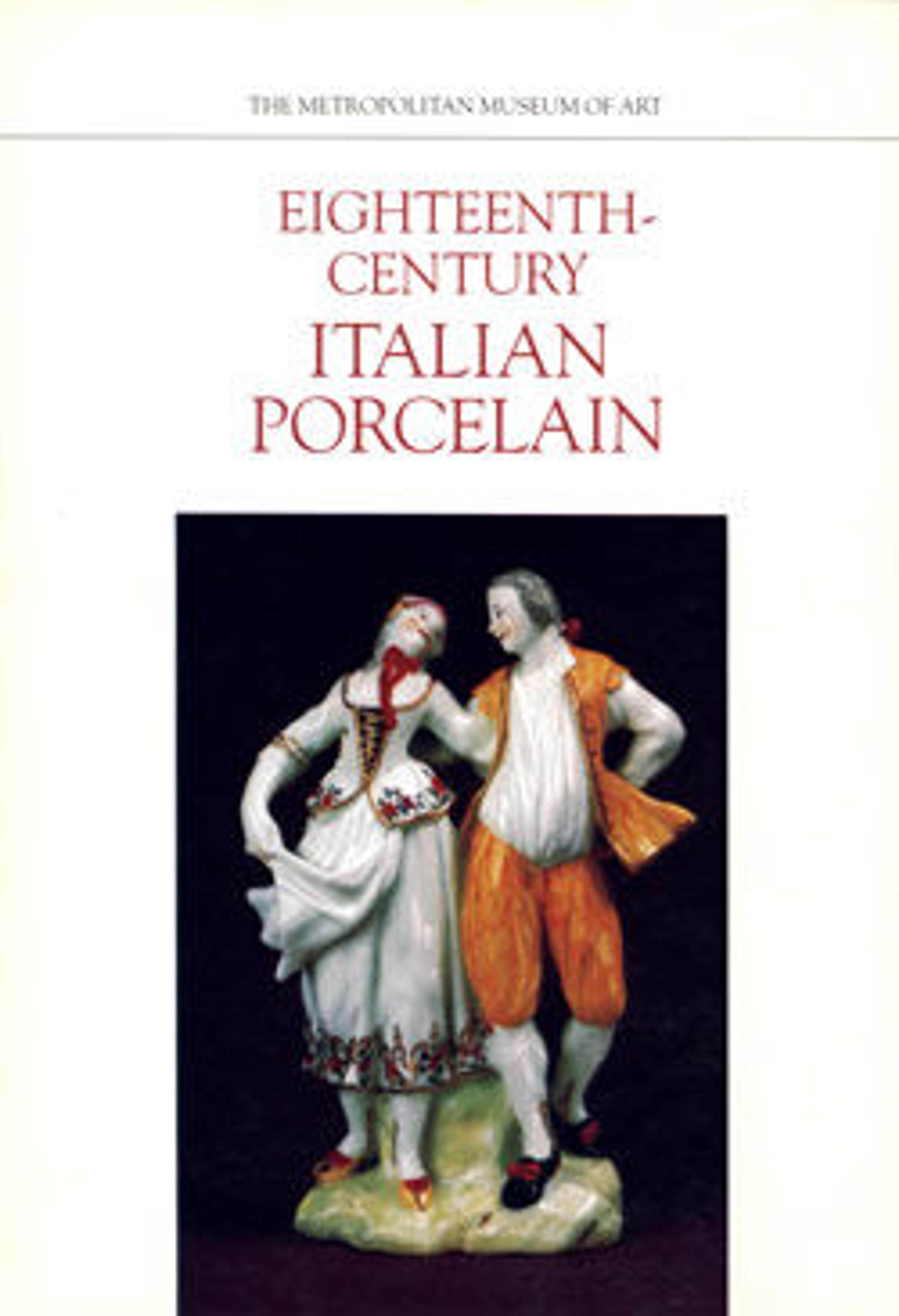Teapot
The third factory in Europe to produce hard-paste porcelain was founded in Venice in 1720 by Francesco Vezzi (1651–1740). The previous year, Vezzi had visited Vienna, where it is likely he became aware of Claudius Du Paquier's new porcelain factory. Presumably, it was during this visit that Vezzi met Christoph Conrad Hunger, who in 1720 left du Paquier's employ and moved to Venice. In the following year, Hunger was recorded as a partner of the Vezzi enterprise, and it must have been Hunger who provided the technical expertise to the factory.
The Vezzi factory produced porcelain for only a seven-year period, and it is thought that less than 200 pieces of Vezzi porcelain have survived. A significant percentage of the surviving objects are teapots, and many of these are executed in a bold, sculptural style particular to Vezzi's factory. Vezzi porcelain is frequently decorated with chinoiserie scenes, and the playful character of the Chinese figures on this teapot is typical of the factory's style.
The Vezzi factory produced porcelain for only a seven-year period, and it is thought that less than 200 pieces of Vezzi porcelain have survived. A significant percentage of the surviving objects are teapots, and many of these are executed in a bold, sculptural style particular to Vezzi's factory. Vezzi porcelain is frequently decorated with chinoiserie scenes, and the playful character of the Chinese figures on this teapot is typical of the factory's style.
Artwork Details
- Title: Teapot
- Factory: Vezzi Factory (Italian, 1720–1727)
- Date: 1720–27
- Culture: Italian, Venice
- Medium: Hard-paste porcelain
- Dimensions: Height: 4 3/4 in. (12.1 cm)
- Classification: Ceramics-Porcelain
- Credit Line: Rogers Fund, 1906
- Object Number: 06.362a, b
- Curatorial Department: European Sculpture and Decorative Arts
More Artwork
Research Resources
The Met provides unparalleled resources for research and welcomes an international community of students and scholars. The Met's Open Access API is where creators and researchers can connect to the The Met collection. Open Access data and public domain images are available for unrestricted commercial and noncommercial use without permission or fee.
To request images under copyright and other restrictions, please use this Image Request form.
Feedback
We continue to research and examine historical and cultural context for objects in The Met collection. If you have comments or questions about this object record, please contact us using the form below. The Museum looks forward to receiving your comments.
